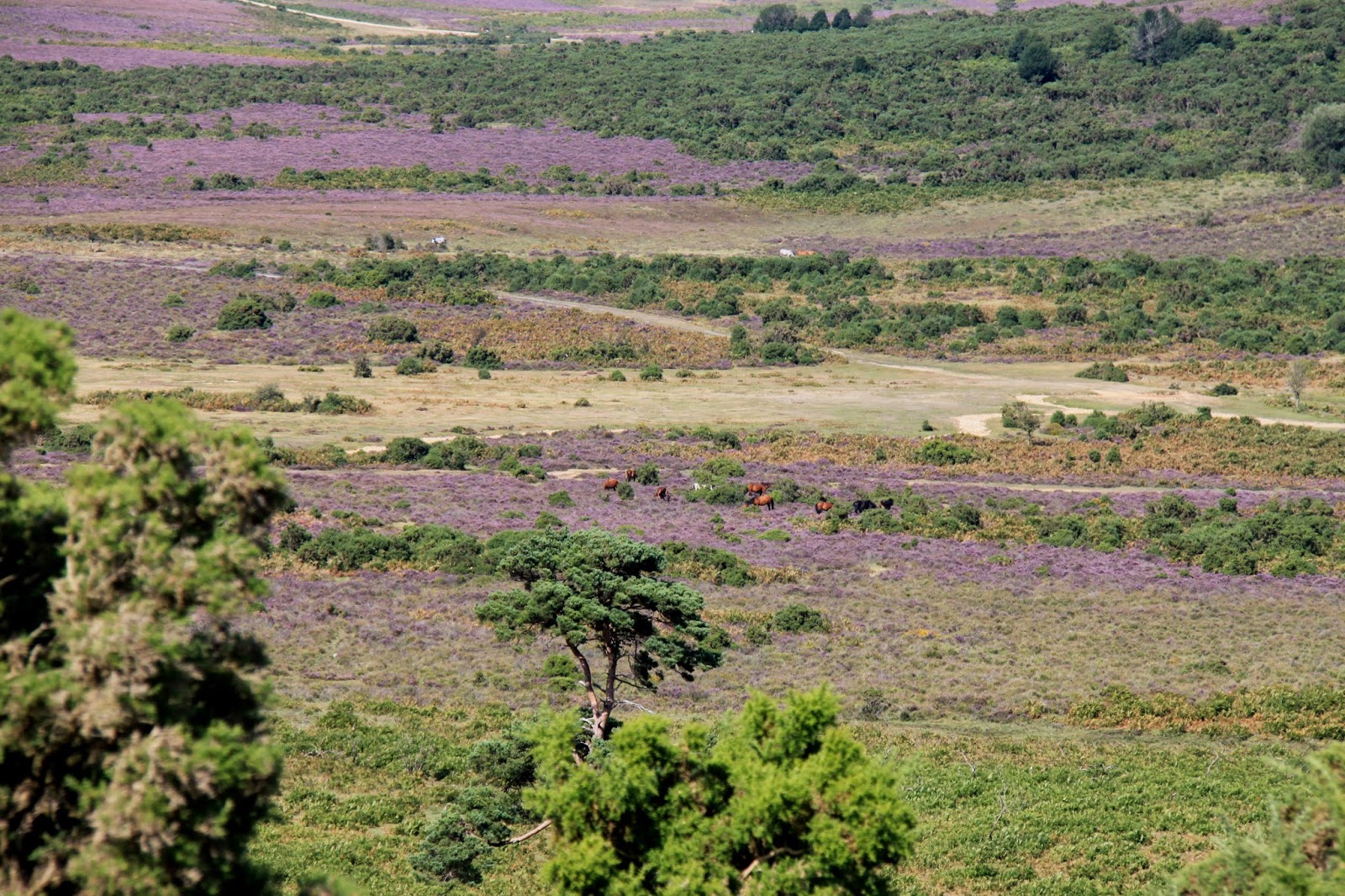Cattle and horses are the main graziers in the Forest, along with deer that browse and pigs that root! These animals maintain the delicate balance between keeping the vegetation down to ensure that it does not revert to woodland, whilst not overgrazing and destroying the wildlife interest.
The day was quite warm for our visit and here the horses were taking advantage of the few waters sources still running in the valleys:
Not many butterflies were evident - but this grayling seemed quite happy to sit on a warm, reflective hand (mine!). As I changed my position it turned in order to maximise the warmth from the sun.
Our lunch spot:
Where there are flushes and the ground is damp for most of the year, mosses can grow and in the nutrient poor habitat the sundews are able to thrive, supplementing their diet with trapped insects.
These areas are also preferred by cross-leaved heather:
On the fringes of the forest there are areas of unimproved grassland within small paddocks. Where the grazing is lighter and the ground is also flushed with ground water, the feverfew flowers profusely at this time of the year.
The New Forest is surprisingly sparse in visitors (away from the car parks). It has something to offer at any time of year, but is particularly special in August (for the purple heather) and later in Autumn, for the amazing colours and profuse fungi. We highly recommend it.

























































